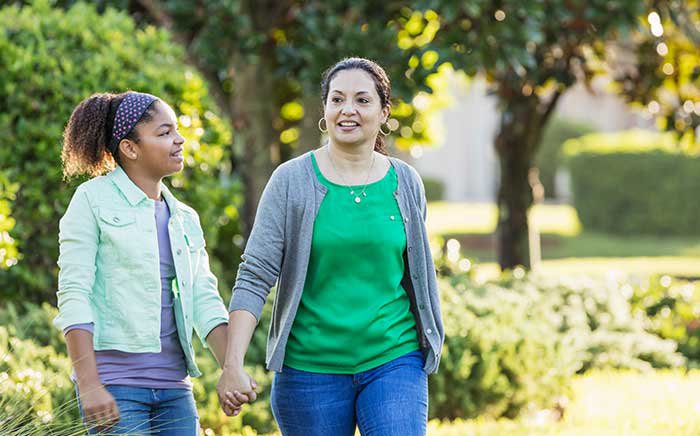Role modelling makes a difference
It’s not just what you say that makes a big difference, it is also what you - and others - do that shapes a young person’s attitudes and behaviours.

The influence of others
Before your young person is faced with deciding whether or not to have their first alcoholic drink, they’ll have formed attitudes and expectations about alcohol and other drugs from parents, carers, family, friends, the media and the internet.
How much they are influenced by others is important when weighing up the risk of alcohol and other drugs. Be aware of how susceptible your young person is to the influence of peers and the attitudes and behaviours of their friends.
What you can do
Your behaviour can significantly influence your child’s attitudes and approach to alcohol and other drugs.1
Parental drinking, supply of alcohol and favourable attitudes towards alcohol are all risk factors in teenage drinking.4
But, if you choose to drink, leading by example and role modelling lower risk drinking can help delay your child’s drinking, and also positively influence their approach to drinking when they become adults.2
You can have a powerful influence on your young person’s drinking behaviour by:
- avoiding saying you ‘need’ or ‘deserve’ a drink
- not giving children ‘celebratory drinks’ in wine, champagne or cocktail glasses
- drinking at the recommended levels to reduce alcohol-related risks (no more than 4 standard drinks in one day, and no more than 10 in a week). The same guidelines recommend people under 18 should not drink alcohol at all7
- including alcohol-free days in your week
- practicing healthy ways to manage stress like exercise, listening to music or meditation
- showing that you don’t need to drink to have fun, deal with stress or wind down
- demonstrating that you can say ‘no’ to a drink at a party or event
- keeping track of how many standard drinks you’ve had, even when you’re not driving.
Parents and carers often ask whether they should tell their young person about their past experiences with alcohol and/or drugs (good or bad). If you do decide to share your past, consider how much detail you want to give; whether your story will be beneficial; and, how you will respond to questions.
- Positive Choices. Drug and Alcohol Education: Parent Booklet 2019 [13.10.2022].
- Randolph KA, Cheatham LP, Weiss UK, Williams J. Exposure to Parent and Peer Alcohol Use and the Risk of Drinking Onset and Escalation Among Adolescents. Child and Adolescent Social Work Journal [Internet]. 2018 [13.10.2022]; 35(2):[97-106 pp.].
- Yap MBH, Cheong TWK, Zaravinos-Tsakos F, Lubman DI, Jorm AF.Modifiable parenting factors associated with adolescent alcohol misuse: a systematic review and meta-analysis of longitudinal studies. Addiction (Abingdon, England) [Internet]. 2017 [13.10.2022]; 112(7):[1142-62 pp.].
- Smit K, Otten R, Voogt C, Kleinjan M, Engels R, Kuntsche E.Exposure to drinking mediates the association between parental alcohol use and preteen alcohol use. Addictive Behaviors [Internet]. 2018 [25.11.2022]; 87:[244-50 pp.].
- Sharmin S, Kypri K, Khanam M, Wadolowski M, Bruno R, Attia J, et al. Effects of parental alcohol rules on risky drinking and related problems in adolescence: Systematic review and meta-analysis. Drug and Alcohol Dependence [Internet]. 2017 [25.11.2022]; 178:[243-56 pp.].
- National Health and Medical Research Council. Australian Guidelines to Reduce Health Risks from Drinking Alcohol2020 [17.10.2022].
- Positive Choices. Talking to a young person about alcohol and other drugs 2021 [16.11.2022].